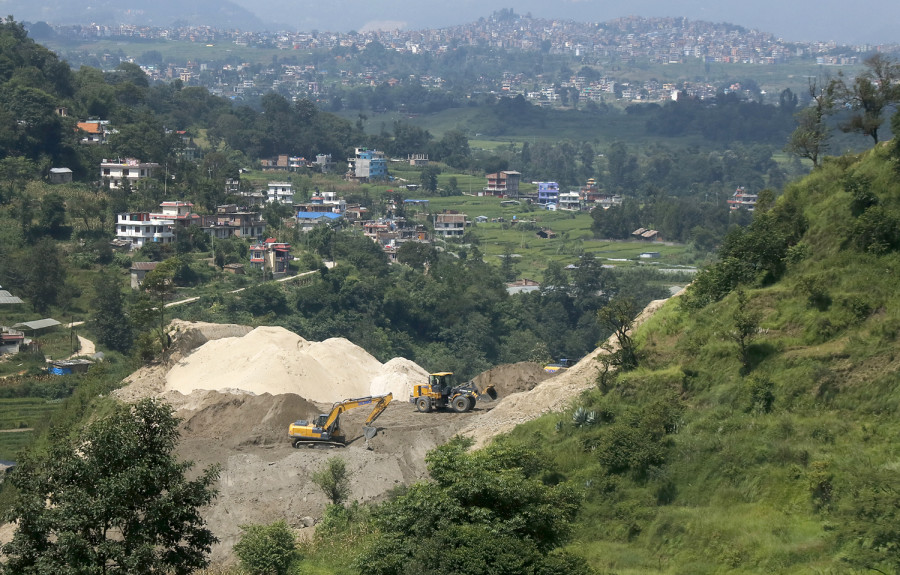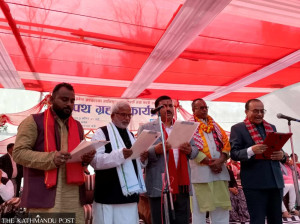Madhesh Province
Ongoing development projects obstruct free movement of wildlife
Movement of elephants, tigers, leopards, bears, blue bulls among other animals has been disrupted owing to the under construction projects—The Kathmandu-Tarai expressway and Motihari-Raxaul-Amalekhgunj oil pipeline
Shankar Acharya
The ongoing development projects in Parsa district have greatly affected wildlife movement in the Parsa National Park (PNP).
Ashok Ram, assistant conservation officer at the PNP, said the movement of elephants, tigers, leopards, bears, blue bulls among other animals has been disrupted owing to the under construction projects—The Kathmandu-Tarai expressway and Motihari-Raxaul-Amalekhgunj oil pipeline—and human activities in the area.
To install pipelines for the oil pipeline project, the Timber Corporation of Nepal cut down 6,563 trees along the Tribhuvan Highway in Amalekhgunj, where a Nepal Oil Corporation depot is located. Similarly, the Kathmandu-Tarai expressway is under construction around 18 kilometres east from the highway. All these development activities are affecting wildlife movement as the Adhabhar and Pathalaiya-Amalekhgunj section of the Tribhuvan Highway are
the main traditional bio-corridors for the wild animals in the PNP and adjoining community forests.
Conservationists are of the opinion that free movement of wild animals will return to normalcy after the completion of the oil pipeline project next year. However, the operation of the Kathmandu-Tarai expressway will affect wildlife movement in the area.
To ensure free movement of wild animals, concerned authorities have decided to construct two underpasses alongside the under-construction expressway. The underpasses are being constructed in a community forest in Bara district, which is about two kilometres from the eastern border of the PNP and around seven kilometres north from Nijgadh section of the East-West Highway. However, conservationists argue that just two underpasses would not be enough for the free movement of wildlife.
Wild animals, mainly elephants, hesitate to use the traditional bio-corridor if there are obstructions. According to Ram, the increased human activities in the ongoing projects have halted the park animals from moving towards the east this year.
Ram, who is also a PhD scholar on elephants, said elephants in the park generally move towards the east in May and June.
“The tuskers used to reach the forest areas of Rautahat and Sarlahi by May and June. But this year, they have yet to reach the area,” said Ram. It is estimated that there are 35 to 40 wild elephants in the PNP.
According to Ram, wild elephants travel through Jhapa and enter into Nepal from West Bengal and Assam in India each year. These animals reach Parsa district through the Koshi Tappu Wildlife Reserve that is spread in Sunsari, Saptari and Udayapur districts.
But these animals have not arrived in Parsa this year.
“Two-three elephants arrived in Sarlahi from the east about four months ago and wreaked havoc in the district. We believe that these animals returned to the east due to the ongoing construction works,” Ram said.
According to Ram, there has been a limited movement of other wild animals like tigers, bears and blue bulls in the eastern part of the national park this year. Disruption of free animal movement will have a long term effect on their breeding, he said.




 8.12°C Kathmandu
8.12°C Kathmandu













